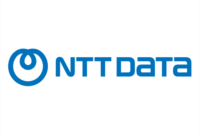Future forward: Building trustworthy AI in government
Click here to watch the full discussion
One year after President Joe Biden signed a sweeping executive order on artificial intelligence, agencies are moving to operationalize their use cases and training employees to use AI effectively.
At the Transportation Department, officials have established an AI Support and Collaboration Center to educate employees on AI capabilities and risks, while also connecting people from across DoT who are interested in developing and deploying AI use cases.
“It’s really designed to help to accelerate our employees on being educated on AI concepts, so they can start getting those innovative ideas,” Mike Horton, acting chief AI officer at Transportation, said on Federal News Network. “We want them to dream by providing them with some use cases, especially external use cases.”
Transportation’s AI compliance plan, submitted to the White House in September, highlights the new center, as well as an “AI Accelerator Roadmap” that includes a use case platform, a research and testing network, an operations lab and deployment and sharing networks as well.
“We’re looking at a shared service: Basically building a house, putting the AI use case in a room in one of those houses, and then allowing any developer to go into a room, rather than every time that we have a use case, building another room, creating another dev test environment,” Horton said. “It’s a massive and a long process. How do we accelerate that by making that infrastructure there to not only accelerate the AI, but also to manage what’s going on.”
Treasury, GSA work on AI training
The Treasury Department has also touted its ongoing use of AI, including to flag billions of dollars in fraud.
But Treasury is also working to ensure its employees have a stronger understanding of AI. As part of its AI compliance plan, the Treasury Department noted it is working with the General Services Administration to embed a series of training into Treasury’s employee learning platform by the end of this year.
The training includes four distinct tracks: general user training; technology; acquisitions; and leadership.
Brian Peretti, chief technology officer and deputy chief AI officer for Treasury, said the key is getting federal employees on the same page about what AI is – and isn’t.
“The key we’re looking for is not specific training necessarily for Treasury, but specific training of what this is, so we can talk to our counterparts,” Peretti said. “So if I have a question for Transportation, we’re using the same lexicon.”
The Treasury Department is also working on an acceptable use policy and user agreement for AI to ensure employees understand the “boundaries they can’t cross,” Peretti said. For instance, federal employees are not supposed to upload personally identifiable information into a generative AI system.
“Our goal going through the internal process is to be able to have employees look at this, understand what it is, what the expectations are, and then be able to build through from there,” Peretti said.
Federal AI strategies
Meanwhile, agencies are required to submit new AI strategies to the White House next March.
As Transportation develops its strategy, Horton said his focus is on human-centered AI development.
“It’s very important to understand that AI is not here to save humans. Humans are here to use AI to save themselves,” Horton said. “How do we keep people safe here at the Department of Transportation? How do we build safe infrastructure in order to make that happen, and how do we distribute resources in order to help our partners go ahead and do those things? So my focus is really on building that AI infrastructure and the policies and the procedures in order to get that type of thing done and embrace the human innovation that comes along with that.”
Click here to watch the full discussion
Speakers

Michael Horton
Acting Chief AI Officer
Department of Transportation

Brian Peretti
Chief Technology Officer and Deputy Chief Artificial Intelligence Officer
Treasury Department

Noel Hara
Vice President & Chief Technology Officer, Public Sector
NTT DATA North America

Justin Doubleday
Reporter
Federal News Network
Have questions or need help? Visit our Q&A page for answers to common questions or to reach a member of our team.


